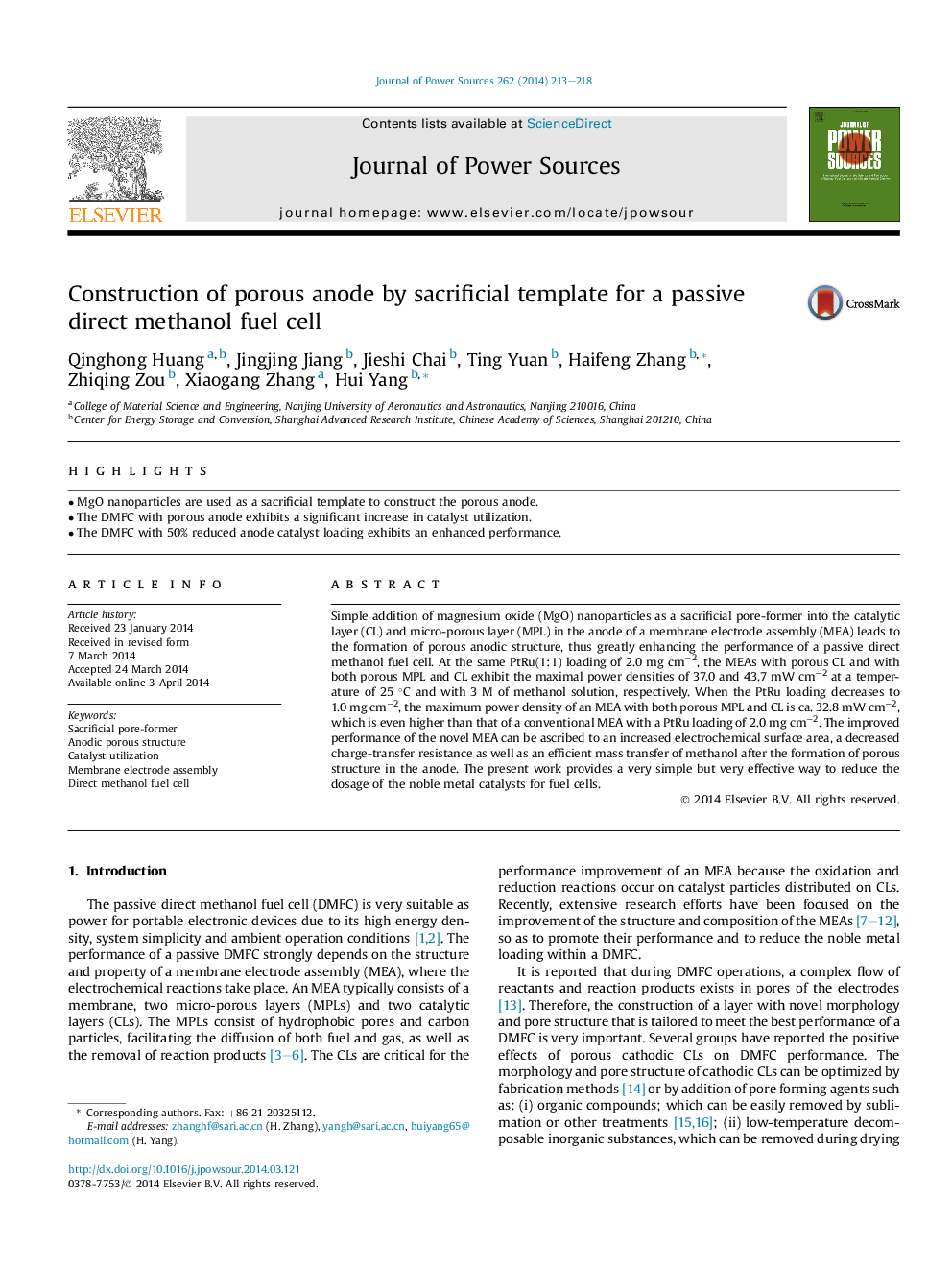| Article ID | Journal | Published Year | Pages | File Type |
|---|---|---|---|---|
| 7736308 | Journal of Power Sources | 2014 | 6 Pages |
Abstract
Simple addition of magnesium oxide (MgO) nanoparticles as a sacrificial pore-former into the catalytic layer (CL) and micro-porous layer (MPL) in the anode of a membrane electrode assembly (MEA) leads to the formation of porous anodic structure, thus greatly enhancing the performance of a passive direct methanol fuel cell. At the same PtRu(1:1) loading of 2.0 mg cmâ2, the MEAs with porous CL and with both porous MPL and CL exhibit the maximal power densities of 37.0 and 43.7 mW cmâ2 at a temperature of 25 °C and with 3 M of methanol solution, respectively. When the PtRu loading decreases to 1.0 mg cmâ2, the maximum power density of an MEA with both porous MPL and CL is ca. 32.8 mW cmâ2, which is even higher than that of a conventional MEA with a PtRu loading of 2.0 mg cmâ2. The improved performance of the novel MEA can be ascribed to an increased electrochemical surface area, a decreased charge-transfer resistance as well as an efficient mass transfer of methanol after the formation of porous structure in the anode. The present work provides a very simple but very effective way to reduce the dosage of the noble metal catalysts for fuel cells.
Related Topics
Physical Sciences and Engineering
Chemistry
Electrochemistry
Authors
Qinghong Huang, Jingjing Jiang, Jieshi Chai, Ting Yuan, Haifeng Zhang, Zhiqing Zou, Xiaogang Zhang, Hui Yang,
